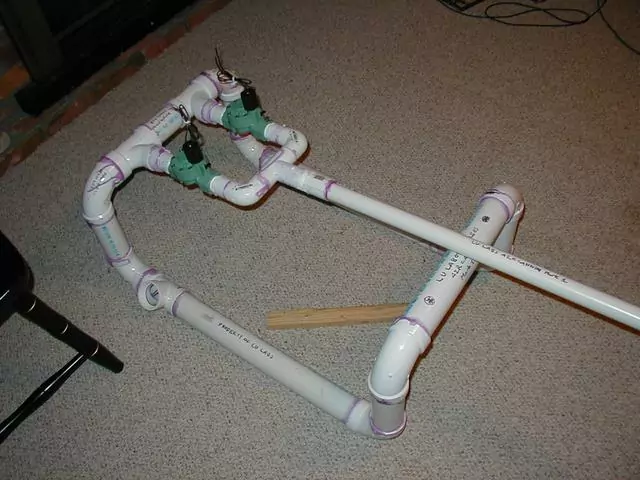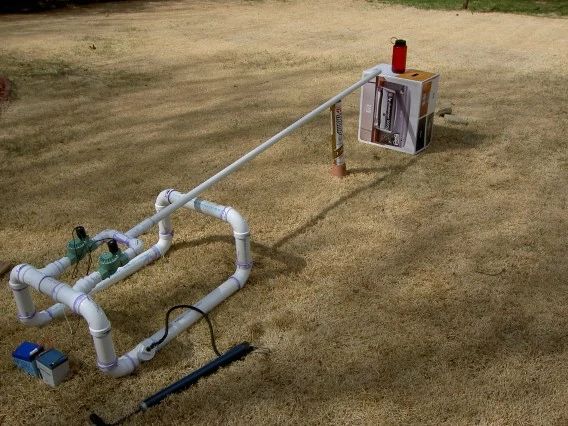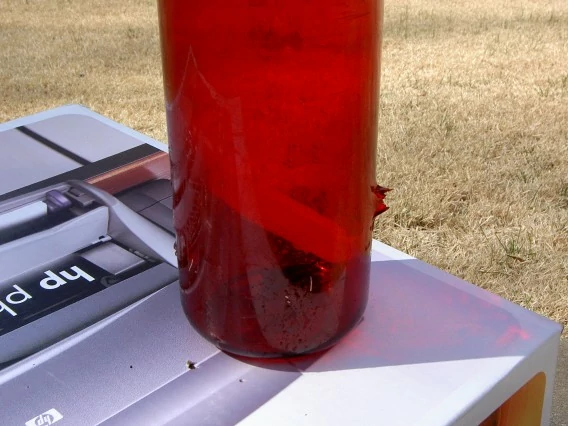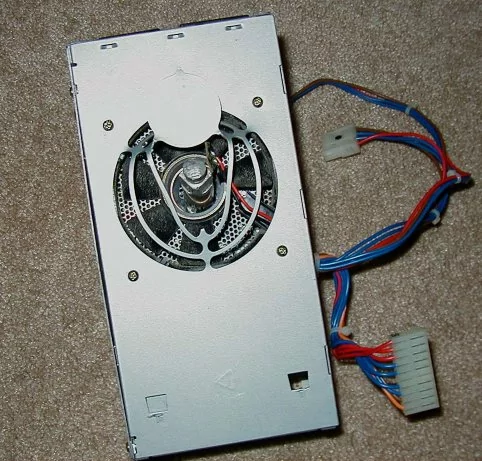mark 1
This is the first air cannon I built. Its air chamber, made of 2" SCH40 PVC pipe,
doubles as a base. The chamber is filled via a Schrader valve glued into a
2" cleanout cap in a cleanout tee. Two parallel 1" sprinkler valves can be triggered to dump
the air into a 7' long 1" barrel.
I don't recommend this design, as it is annoying to set up and use. Most importantly, the long and
thin barrel flops around and must be supported along its length. For the same reason, it is also
difficult to aim in the vertical direction without someone holding the cannon in position. Although
chamber is shaped to double as a stand, it cannot be disassembled and is awkward to move. Its small
barrel does not allow a wide range of projectiles.
However, its performance is not affected by these factors and on occasion, it has been impressively
powerful. C batteries fit the barrel perfectly, and metal rods can be fired with a thick disk at
the end and some toilet paper as wadding.
 |
Here is the main body of the cannon, with the barrel attached. The chamber is the
folded length of 2" PVC pipe. |
 |
Closeup of the twin valves. Two valves are somewhat better than one due
to the greater cross-sectional area that air can flow through. Even though
the valves have 1" diameter porting, the actual open area is smaller. Unfortunately,
the valves are permanently installed as a result of this arrangement. |
 |
These projectiles were used in the Mk I cannon. The white
plastic piece in the lower right corner is the sabot, or pusher, for
the rods at top and left. The bit sticking out of the ends of the
metal rods fits into the hole in the sabot. |
 |
Lu Laboratories has a tradition of attempting to destroy objects
known for their durability. Here, a Nalgene water
bottle, full of water, is about to receive a metal rod. |
 |
The aftermath of the previously set up shot. The projectile went
through the bottle entirely and embedded itself in a fence some 40
feet away. |
 |
The same Nalgene bottle, with the projectile inserted to show how
it went through. |
 |
An old Macintosh power supply after being shot with a random
metal slug. It punctured the power supply, but the coarse threads on
the shaft prevented it from clearing it. |
 |
The same power supply, showing how the projectile went right
through the fan. |








